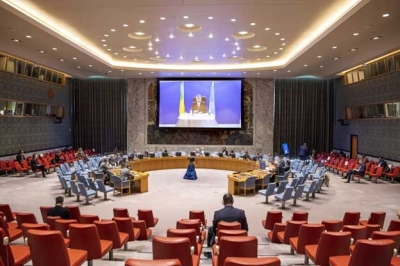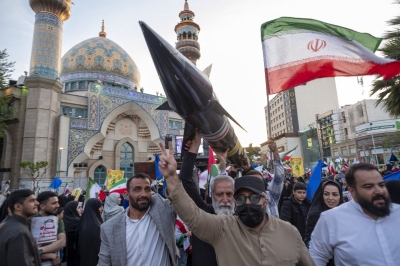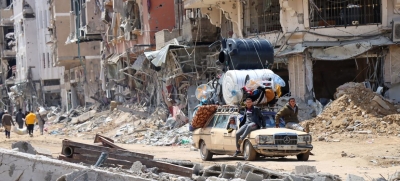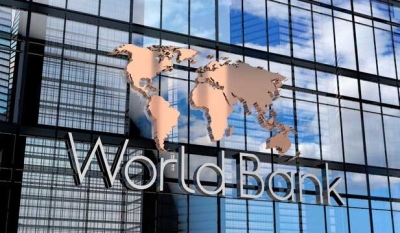RIO DE JANEIRO, Apr 15 (IPS) — Alice went for eight weeks without Portuguese language classes after starting her first year of high school on Feb. 5 in this Brazilian city. Her chemistry teacher taught only two classes and disappeared. But the worst part is the classroom without air conditioning in the heat of more than 35 degrees Celsius some days during the southern hemisphere summer.
Her public school in a central neighborhood of Rio de Janeiro, with more than 500 students, illustrates the conditions of public education in Brazil, with poorly paid teachers and the resulting poor work attendance, as well as precarious infrastructure and other problems.
It is precisely in secondary education — the last three years of high school after nine grades of primary and middle school — that the biggest bottleneck in Brazilian education is found, according to an assessment agreed on widely by experts. The first nine years are for students up to the age of 14 and the last three years for students between the ages of 15 and 17.
Since Mar. 27, the Senate has been discussing a reform of the New Secondary Education Law, which came into force only two years ago. The government, in office since January 2023, proposed the modifications whose key points were already approved by the lower house of Congress.
Brazil is thus trying to overcome the shortcomings in education that have placed the country among the lowest ranked in comparative assessments, such as the Program for International Student Assessment (PISA), which studies 81 countries.
The new reform raises from 1,800 to 2,400 the number of hours to be dedicated during the three years of high school to compulsory subjects such as mathematics, natural and human sciences, and the Portuguese, English and Spanish languages.
It also provides for the extension of full-time education to a minimum of seven hours per day, and in technical-vocational schools as well.
In full-time primary and secondary institutions, students are at school for at least seven hours a day, attend regular classes in the morning and extracurricular activities, such as technical courses, sports or special subjects in the afternoon, or vice versa.
In addition, they receive two or three meals at school and in some cases can take a shower there — an attraction for students from low-income families in a country marked by huge social inequalities.
Even so, opportunities are not the same for everyone because the nine years of public basic education are in the hands of the municipalities, secondary education is run by the state governments and university education is the responsibility of the central government.
The new reform now depends on ratification by the Senate.
In secondary education, another 600 hours would be allocated to optional subjects, depending on the students’ interests, and may be extended further in the case of technical courses.
Currently, the flexibility applies to 1200 hours, but without adequate management in many educational centers. Alice, the student who preferred to use a fictitious name, complained that the extra hours are used for classes of the regular subjects or without a specific purpose.
"One teacher spent a long time explaining what the colors of the national flag symbolize," she complained to IPS.

Curbing the school dropout rate
The government also created the "pe de meia" program, which in Brazil means savings. It offers 2,000 reais (400 dollars) per year, divided into 10 monthly installments, to high school students whose families are poor and are registered in the government’s Unified Social Assistance Registry. To receive it, they must demonstrate at least 80 percent school attendance.
The aim is to curb the dropout rate, which is higher in secondary education than in primary or middle school.
In 2023, the number of students who dropped out of school totaled 480,000, according to the Ministry of Education’s school census, released on Apr. 2.
In this country of 203 million people, of the adolescents and young people aged 15 to 29, nine million are out of school and have not completed high school, according to 2023 data from the Brazilian Institute of Geography and Statistics (IBGE).
The savings program seems like little money, but it is important "as a complement" for adolescents, who are generally engaged in informal work, and for low-income families, who benefit from social programs, said Natália Fregonesi, coordinator of Educational Policies at the non-governmental organization Todos pela Educação (Everyone for Education).
The annual IBGE survey points to the need to find work as the main cause of school dropout, which stands at 47.1 percent among young people aged 15 to 29 years. There is a strong contrast between men, with an index of 53.4 percent, and girls and women: 25.5 percent. Pregnancy is the second cause of dropout of girls and women, accounting for 23.1 of all young female dropouts.
Among boys and men, a lack of interest in studying is in second place, accounting for 25.5 percent.

More time in school
"The statistics show a challenging scenario, with many students lagging behind because they flunk or drop out of school. In addition to the ‘pe de meia’ program and other measures, systemic policies are needed, such as adequate infrastructure, teachers and full-time education," said Fregonesi, a chemist who specialized in education policies.
Full-time schools are an efficient model, as they create a different relationship between students and schools, offer other subjects in addition to the regular curriculum, help youngsters think more clearly about their future, and give students a leading role, in addition to having full-time teachers, the expert told IPS by telephone from São Paulo.
The idea is to increase the number of full-time schools, which already exist throughout the country, but in a very unequal manner. While in the state of Pernambuco, in the impoverished Northeast region, 66.8 percent of students are in full-time education, in the Federal District, where Brasilia the capital is located, the proportion is only five percent, and in São Paulo, the richest state, only 25.9 percent.
On average, only 21.9 percent of students in the public education system are in full-time schools.
But increasing the number of full-time schools requires a large investment and Brazil has limited availability of public resources. According to data from the Organization for Economic Cooperation and Development (OECD), which brings together 38 countries, Brazil ranks among the last in terms of spending per basic education student.

Putting a priority on technical-vocational education
Another measure being pursued is to expand technical education. In Brazil, only 11 percent of students enrolled in secondary school take technical courses, while the average exceeds 40 percent in the other OECD countries, said Fregonesi.
"There is a certain prejudice in relation to technical education in Brazil, where it is seen as ‘inferior’ to high school, as preparation for university," he said. But vocational training is lacking in the national economy and prepares students just as well for higher education, he argued.
In Brazil, there is growing unmet demand for skilled labor, for example, in information and communication technologies, which makes it necessary to expand technical secondary education.
The country’s educational challenges are colossal. In 2023, there were 47.3 million students enrolled in primary and secondary education and 6.5 million in university courses. But there were 68 million Brazilians without basic schooling.
Above and beyond these figures, the fact remains that the falling birth rate is reducing the school population. In 2019, the year before the outbreak of the pandemic, 57 million students were enrolled in school. The pandemic reduced that number by 9.5 million.
Education in Brazil operates both as a factor of social ascent and, at the same time, of inequality. Around 20 percent of students from the higher income sectors attend private primary and secondary schools, which generally are better funded and produce better results than public schools.
In higher education, the situation is paradoxically reversed. The children of the higher-income segments, who are better educated in private schools, gain easy admission to public universities, which offer better education than private colleges and therefore better possibilities for professional advancement.
To correct this imbalance, progressive governments in recent decades created racial and social quotas or affirmative action to benefit the generally poorer blacks and students in public elementary and secondary schools.
All these measures and some policies, such as financing systems for basic education maintained by city and state governments, have fomented small advances in Brazilian education, which have fallen far short however.
That process suffered a setback with the pandemic and the far-right government of Jair Bolsonaro (2019-2022). The current administration of left-wing President Luiz Inácio Lula da Silva is trying to get back on course.






